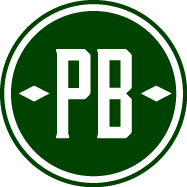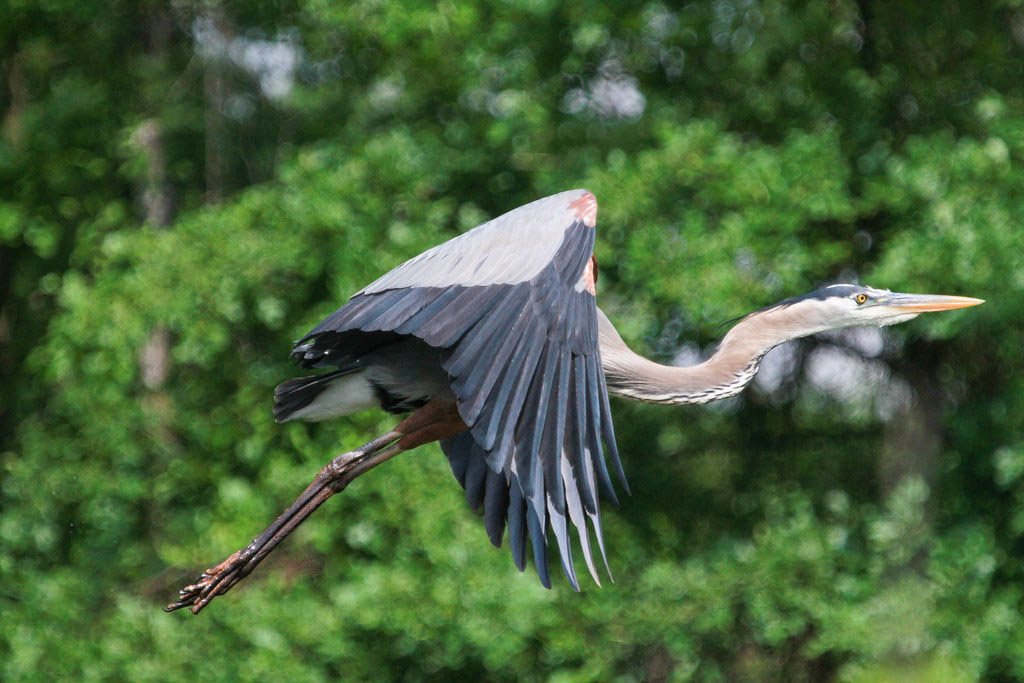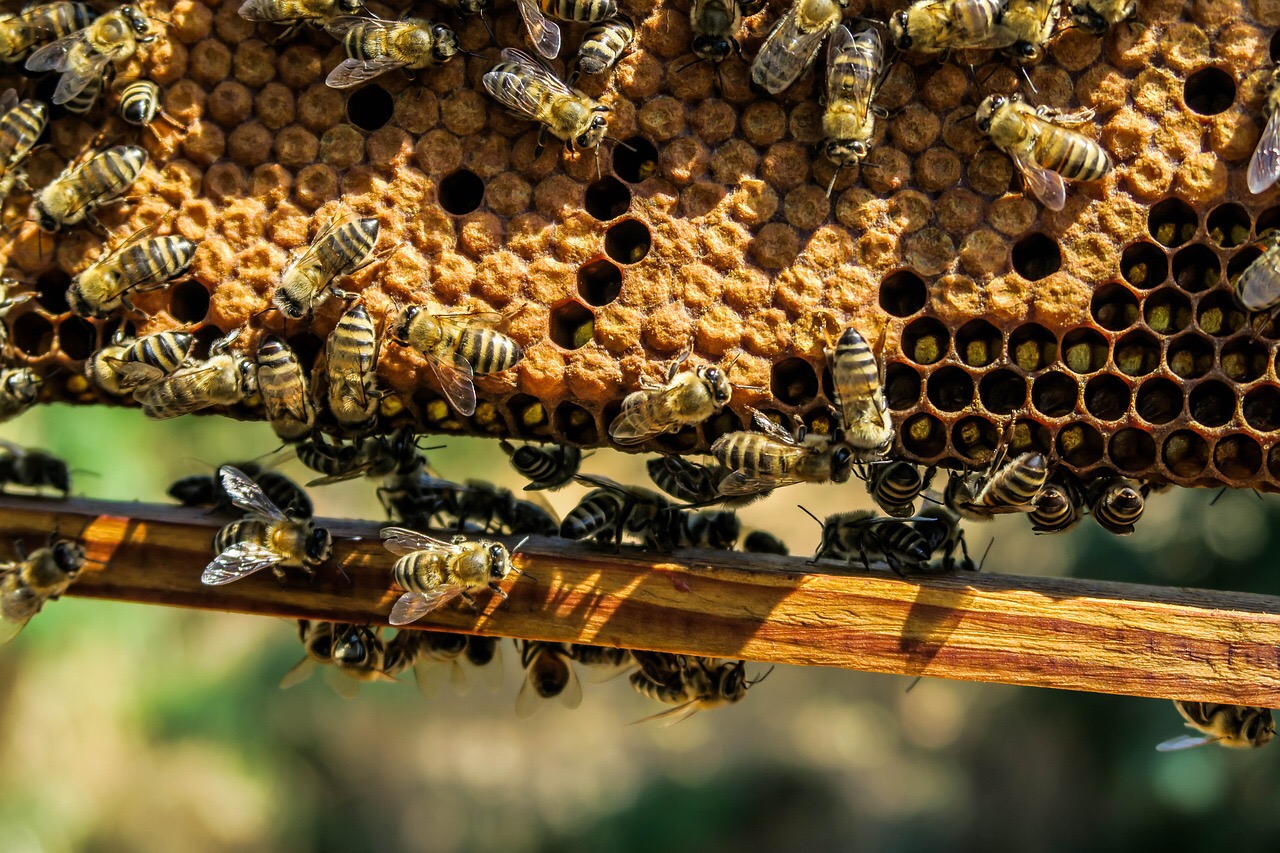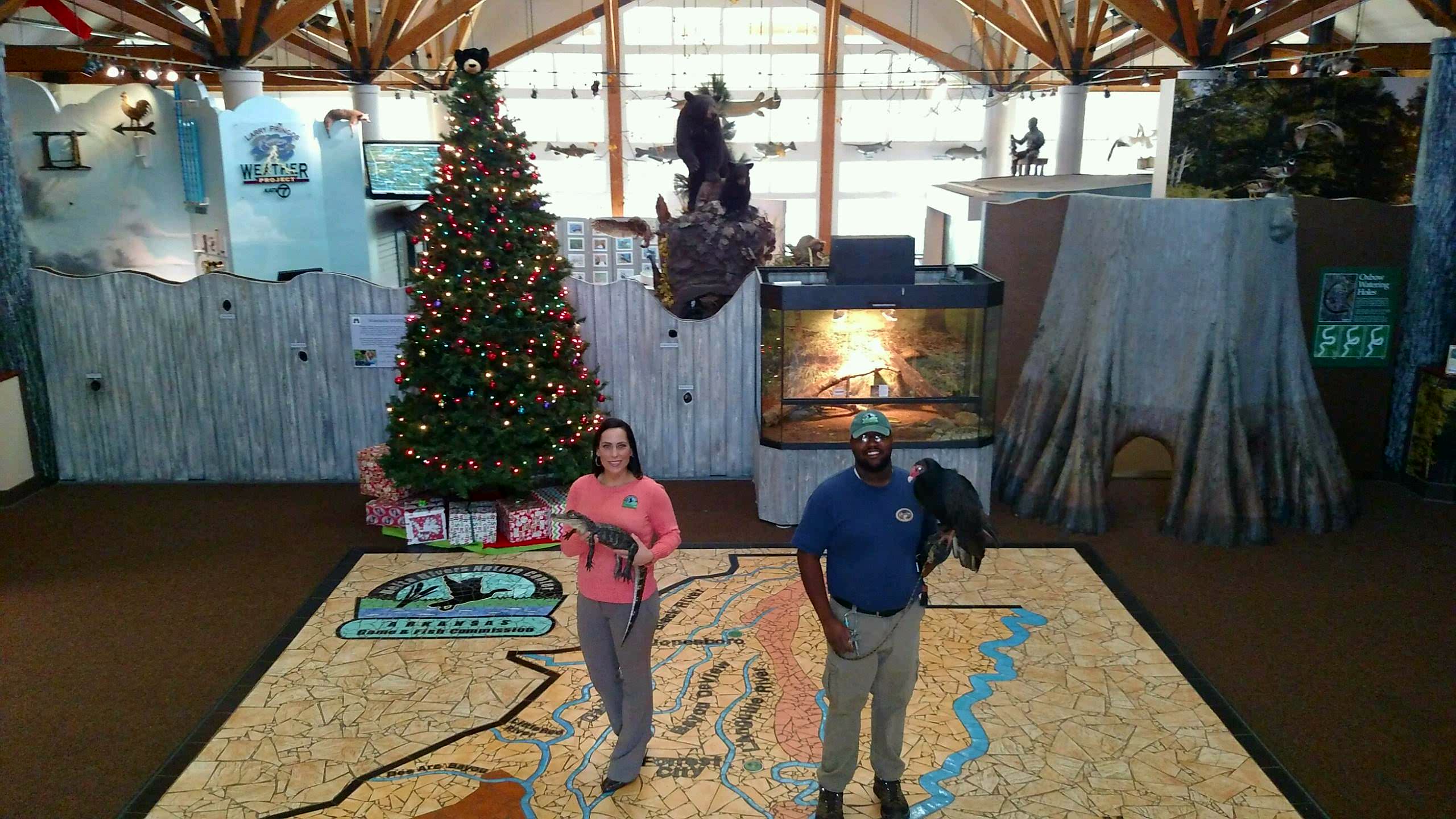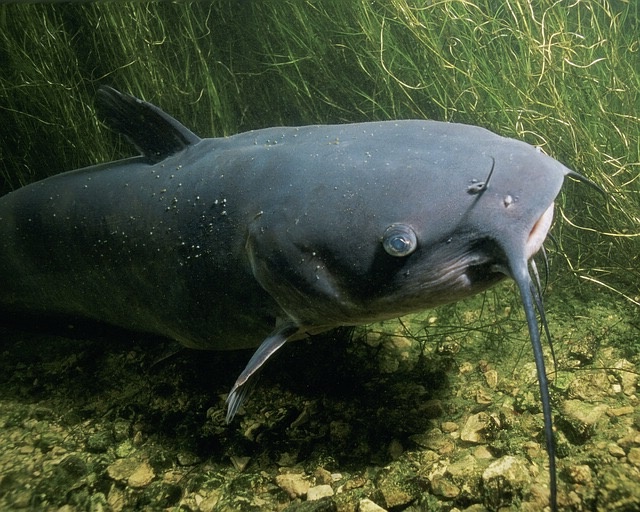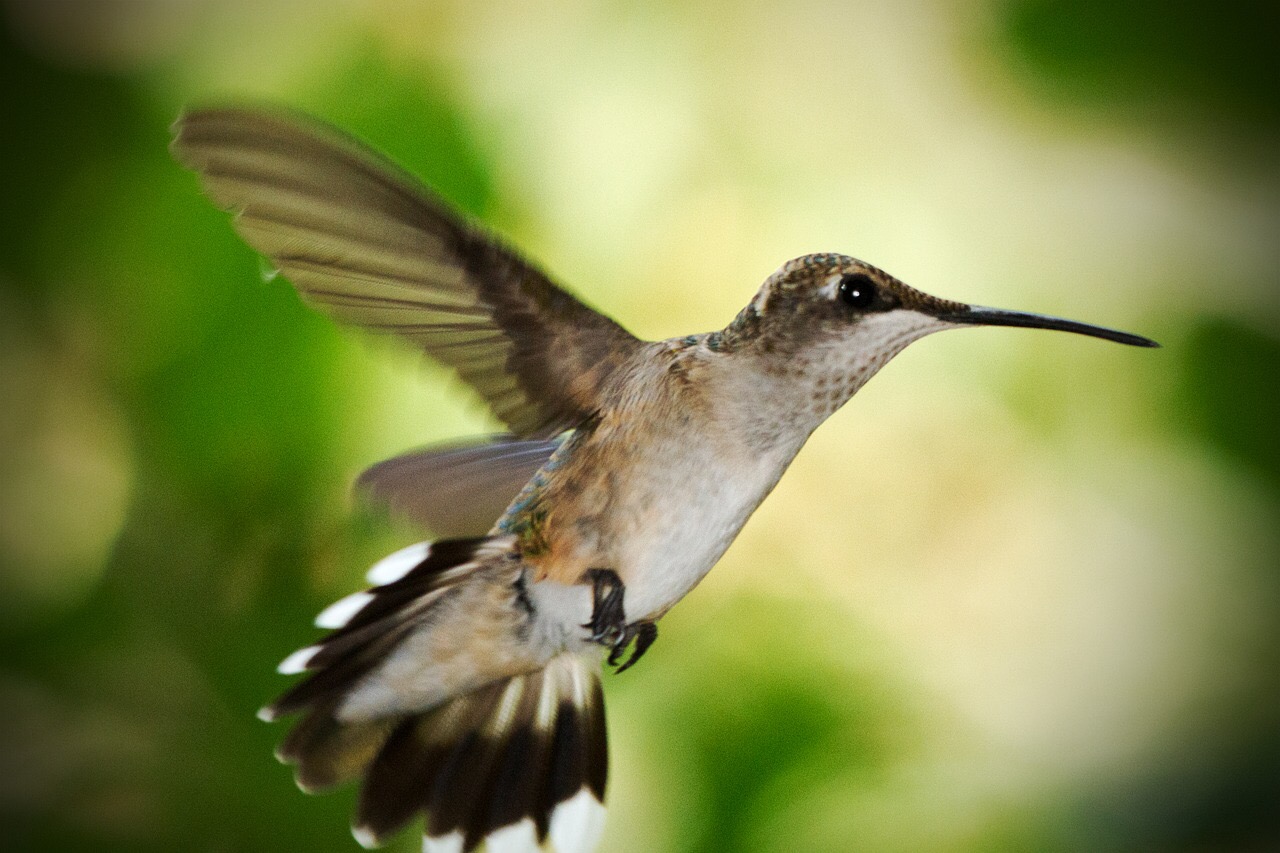The Great Blue Heron, the largest of the North American herons, can be found year-round in Pine Bluff and the Delta Lowlands.1 That is quite fitting, as this majestic bird represents the Delta in several ways: it is beautiful, strong, and resourceful and makes great use of the wetlands.
Bird Basics of the Great Blue Heron
In flight, this bird cruises along beautifully at about 20 to 30 miles per hour with a wingspan, on average, of about 5.5 to 6.6 feet.2 The extended wings of a flying Great Blue Heron show off a more complex blue-purple feather pattern, with darker blue tones showing on the flight feathers than what is seen at rest. When this bird is up to speed, it folds its neck into an “S” shape and extends its legs beyond the tail.
Its body length is about 3.2 to 4.5 feet with a weight typically ranging from about 4.6 to 7.3 pounds.3 This bluish cat-sized bird with a human-height wingspan cannot be missed, especially as it cruises along overhead at traffic speeds found in town.
Life and Habitat of the Great Blue Heron
The Great Blue Heron is quite resourceful and efficient. These birds, waders with long legs, are found mostly in marshes or along shores. Not surprisingly they are excellent fishers, quick with their long necks and blade-like bills in going after fish and other prey.4 They also eat insects, rodents,5 small mammals, reptiles, and amphibians.
Great Blue Herons are solitary hunters.6 However, they nest in colonies, often with 500 or more nests, with multiple nests per tree; they prefer tall trees, with nests placed a hundred feet or more high, though sometimes they make do with low shrubs. Females produce two to six or seven eggs, which both parents protect and incubate. Chicks can survive on their own by about two months of age.
Taxonomy of the Great Blue Heron
For the scientifically minded, the Great Blue Heron is a member of the order Pelecaniformes, the family Ardeidae, the genus Ardea, and the species Ardea Herodias. All herons are wading, fishing birds with long necks that they fold into an “S” shape at times; long, often sharp bills; and long legs.
For comparison to other birds common around the Delta’s waterways, the great white egret, one of several egret species, is also a type of heron. Like the great blue heron, the egret is a member of the order Pelecaniformex and family Ardeidae; but it falls under the genus Egretta amd species Egretta alba.
The American white pelican, one of eight pelican species, falls under the order Pelecaniformes, the family Pelecanidae, the genus Pelecanus, and the species Pelecanus erythrorhynchos, one of the two better known pelican species. Like herons (which include egrets), pelicans are long-billed fishers found around water. Pelicans, however, are not the long-legged waders that herons are; and pelicans often dive for their prey.
Acknowledgement
Thank you to Mitch Wessels Photography for allowing use of this Great Blue Heron photo, featured above. For photography sessions or other inquiries, contact Mitch Wessels Photography at go2worku@yahoo.com.
Key Sources
Cornell Lab of Ornithology / All About Birds
Great Blue Heron: Overview (2018). All About Birds, The Cornell Lab of Ornithology, Cornell University, Ithaca, NY. https://www.allaboutbirds.org/guide/Great_Blue_Heron/overview. Accessed August 21, 2018.
Great Blue Heron: Identification (2018). All About Birds, The Cornell Lab of Ornithology, Cornell University, Ithaca, NY. https://www.allaboutbirds.org/guide/Great_Blue_Heron/id. Accessed August 21, 2018.
Great Blue Heron: Life History (2018). All About Birds, The Cornell Lab of Ornithology, Cornell University, Ithaca, NY. https://www.allaboutbirds.org/guide/Great_Blue_Heron/lifehistory. Accessed August 21, 2018.
National Geographic Partners
Great Blue Heron (2018). The National Geographic. National Geographic Partners, Washington, D.C. https://www.nationalgeographic.com/animals/birds/g/great-blue-heron/. Accessed August 21, 2018.
U.S. Fish & Wildlife Service
Great Blue Heron (2016). U.S. Fish & Wildlife Service, National Wildlife Refuge System. U.S. Department of the Interior, Washington, D.C. https://www.fws.gov/refuges/birding/GreatBlueHeron.html. Last updated January 6, 2016.
Migratory Bird Treaty Act (2017). U.S. Fish & Wildlife Service, Migratory Bird Program. U.S. Department of the Interior, Washington, D.C. https://www.fws.gov/birds/policies-and-regulations/laws-legislations/migratory-bird-treaty-act.php. Last updated December 3, 2017.
Additional Sources
The National Audubon Society
Guide to North American Birds: Great Blue Heron (2018). The National Audubon Society, New York, NY. https://www.audubon.org/field-guide/bird/great-blue-heron. Accessed August 21, 2018.
Cornell Lab of Ornithology / All About Birds
Great Egret: Overview (2018). All About Birds, The Cornell Lab of Ornithology, Cornell University, Ithaca, NY. https://www.allaboutbirds.org/guide/Great_Egret/overview . Accessed August 22, 2018.
American White Pelican: Overview (2018). All About Birds, The Cornell Lab of Ornithology, Cornell University, Ithaca, NY. https://www.allaboutbirds.org/guide/American_White_Pelican/overview. Accessed August 22, 2018.
Endnotes
- (1/2) This post is adapted from a similar post on PB Junction’s sister site, Bayou Birdie. (2/2) The Blue Heron, seen year around in the Delta and other regions of the U.S., is migratory. It is protected by the Migratory Bird Treaty Act.
- The physical characteristics in this section are described by the National Geographic and Cornell Lab of Ornithology, both hyperlinked in this section, as well as other articles listed under Key Sources, especially, and Additional Sources.
- The U.S. Fish & Wildlife Service, The National Geographic, and most other sources listed described the same weight range cited here; all described the same body length.
- The U.S. Fish and Wildlife Service, hyperlinked in this section, provides more detail of the Great Blue Heron’s diet and predatory behaviors. But many of these behaviors and related physical characteristics are addressed by Cornell Lab of Ornithology and National Geographic as well.
- This cat-sized bird with a Kitty Hawk wingspan is apparently a good mouser. No one recommends calling “kitty, kitty,” though.
- This differs from cranes which “can be found in large flocks outside of the breeding season, one way a quick distinction can be made, accordimg to the U.S. Fish & Wildlife Service. Also, cranes fly with straight necks, not with the “S” shape, and in a “V” formation.
